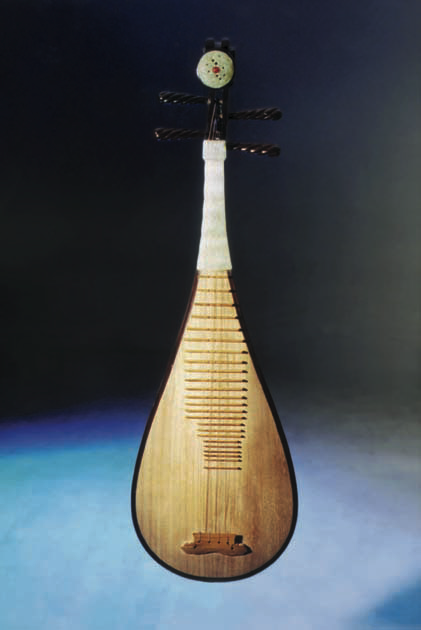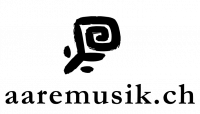About the pipa
 The pipa is a plucking instrument for which music had been written already in ancient times. The earliest evidence of pipa music comes from a manuscript from the Dunhuang caves in west China, written in the Tang Dynasty (618- 907) for pipa solo. Its pear-shaped body is carved from one piece of hardwood and covered with a flat soundboard. The four steel strings (at old time was silk or guts) are tuned A-d-e-a; the tone range spans from A to e3. It is held on the lap vertically, the fingers of the left hand press the strings onto one or more of the 30 frets. The fingers of the right hand pluck the strings with the aid of plastic plectrums which are shaped like a fingernail and taped onto the five fingers. Their movements basically are from inside towards outside. They produce the sounds together with the very rich techniques of the left hand; it could produce a wide range of varied sounds. It is one of the most representative instruments of Chinese music.
The pipa is a plucking instrument for which music had been written already in ancient times. The earliest evidence of pipa music comes from a manuscript from the Dunhuang caves in west China, written in the Tang Dynasty (618- 907) for pipa solo. Its pear-shaped body is carved from one piece of hardwood and covered with a flat soundboard. The four steel strings (at old time was silk or guts) are tuned A-d-e-a; the tone range spans from A to e3. It is held on the lap vertically, the fingers of the left hand press the strings onto one or more of the 30 frets. The fingers of the right hand pluck the strings with the aid of plastic plectrums which are shaped like a fingernail and taped onto the five fingers. Their movements basically are from inside towards outside. They produce the sounds together with the very rich techniques of the left hand; it could produce a wide range of varied sounds. It is one of the most representative instruments of Chinese music. In ancient music we don’t find the composer’s name, as the individual had no value in the feudalist society. How we know how music was played is from poems. Bai Juyi, a great poet in Tang Dynasty, it was from 618- 907, left us a fantastic poem . He composed it after he had listened to a pipa recital. It is considered the most important historical description of early pipa music. In this poem, there are two lines describing the sounds of the pipa being like: ‘big and small pearls dropping into a jade plate’. In 1983, Yang Jing composed a piece called ‘Nine Jade Chains’ ‘Jiu-Lian-Yu’ imagining the pearls falling into the jade plate. This piece has won the composition competition of New Music at that time. Since last 25 years we started to see pipa solo concerts, or with symphony and chamber orchestras and various ensembles also with Jazz and improvisations around the world.

